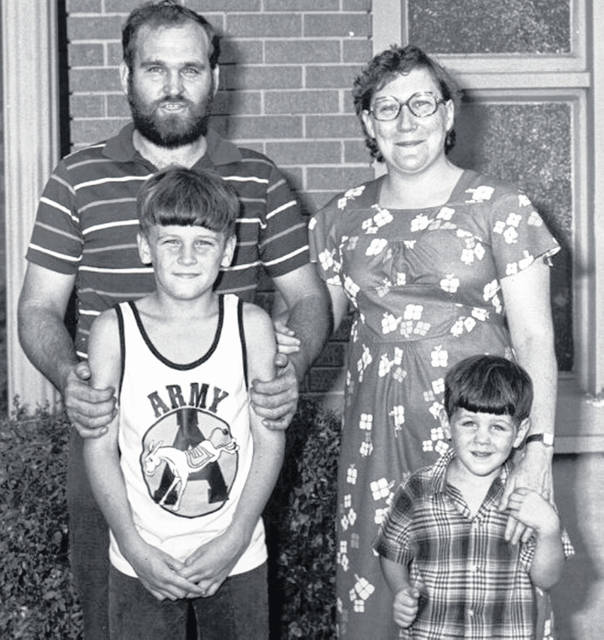
Editor’s note — This is the third part of a four-part story about Virgil “Wade” Tackett, who as a 17-year-old left his family’s Hillsboro home in 1986 to find work in Alaska. Three weeks into his stay working for a local cannery, Tackett and a friend went exploring in the Alaskan wilderness near Chicagof Island. Tackett was never heard from again. Between strange sightings and psychic visions, the search for Tackett has turned up more questions than answers. Information for this series comes from author RW Swartz. His book “Cold Water, Cold Hearts” was released last month.
Alaska is known to be a place where people seem to drop off the face of the Earth. The rural landscape, the wildly unpredictable climate, and the sheer size of the state makes it a place where people can easily disappear, whether they’re meaning to or not.
“When someone goes missing in Alaska, search areas can be as large as entire states in the Lower 48, and considerably more treacherous,” said Alex Tizon with The Atlantic.
The search for Wade Tackett was limited, and even in the area surrounding his abandoned skiff, investigators easily could have missed something because the area is extremely rural.
Chicagof Island, one of Alaska’s “ABC” islands, is home to the highest concentration of bears per square mile in the world. The terrain is rural, desolate and unforgiving. The nearest town, Pelican, had a population of 180 in 1980. Today, the small village is home to only 87. If Tackett showed up in Pelican, his parents are sure someone would have noticed. But weeks went by and Tackett was still nowhere to be seen, in Pelican or elsewhere.
Just when the investigation was starting to go cold, calls to Alaskan authorities started to roll in. Reports of Tackett’s disappearance had travelled around the area, and people were certain they had seen him alive and well. Missing posters were put up around Chicagof Island bearing his image, and locals began to take notice.
The first sighting came from a fishing captain on Chicagof Island. He claimed that a boy matching Tackett’s description had approached him about a fishing job. Another man said he had seen Tackett twice, but he had longer hair than the picture on the missing flyer. A third man spotted someone that looked like Tackett at the Sitka airport shortly after he disappeared.
The Tacketts were encouraged by these initial sightings, but ultimately, nothing came of them.
One perplexing call was from someone who claimed to be an Athabaskan medicine woman named Mimi. She called in to report that Tackett was “well taken care of, trained in the Indian ways, and healed of some disorder.” The Tacketts began to wonder if it was possible that their son had been injured and lost his memory, eventually finding his way to a remote Athabaskan village. There are many native Alaskans on Chicagof Island with remote fishing villages. Could Wade Tackett have been rescued by a member of one of these tribes?
That theory started to sound even more plausible when Mary Tackett placed a call to Delores “Dolly” Whaley, the CEO of Missing Children of America. Mary brought her up to speed on the case and asked if she had heard anything about Wade.
It turned out, she had. Between October 1986 and January 1987, Whaley had received mysterious calls from a woman with a Tlingit accent who claimed that Wade was “well taken care of.” She had no way of following up with the phone calls since the woman left no identification, but for Mary and Virgil Tackett, the information was encouraging.
Another sighting was reported directly to Mary Tackett through Sitka’s Church of Jesus Christ of Latter-Day Saints. The woman who reported it was a local hairdresser based in Sitka. She had cut the hair of a young man in December of 1986. As she described his hair, facial features, and mannerisms, Mary was certain that the hairdresser’s mystery client had to be Wade.
In 1987, another phone call from two Alaskan natives was placed to Dolly Whaley. Speaking through an interpreter, they reported seeing Wade at an Alcoholics Anonymous meeting in Hoonah, a tiny Tlingit village near Sitka. Dolly followed the lead, but she told the Tacketts that it was a bust with no further explanation.
In 1989, the Tacketts were contacted by a producer of the “Oprah Winfrey Show” and asked to appear on a segment about missing children. Their appearance on the show turned out to be just what they needed to get Wade’s story out to the world. A woman named Lynn Brooks from YellowKnife, Canada remembered meeting a quiet young man at a bar in 1987. She spoke to him for three hours, and he told her his name was Wayne, he was from Michigan, and he loved wildlife. After viewing the Oprah Winfrey special, she believed the man was Wade Tackett.
Sightings for Wade were numerous, and while some were considered unreliable, some were too specific to ignore. For instance, one sighting referenced a shirt with a stylized pineapple on the front — the same shirt as Wade owned, but was not mentioned on missing flyers. This, along with others, seemed like too much of a coincidence to be nothing. The population of Sitka in 1980 was around 7,000 people, and Pelican was less than 200. The chances of a Wade look-alike seemed to be slim.
Despite all of these promising leads, the police refused to follow up. They claimed that these were likely mistaken identities or fabricated sightings. The Tacketts were discouraged, but they didn’t stop searching for their son. Next, they looked to the U.S. Congress for help.
In the final installment of the this series, we’ll discuss how the Tacketts gained Congressional aid, possible theories, and R.W. Swartz’s upcoming book about the case.
Isabella Warner is a stringer for The Times-Gazette.


